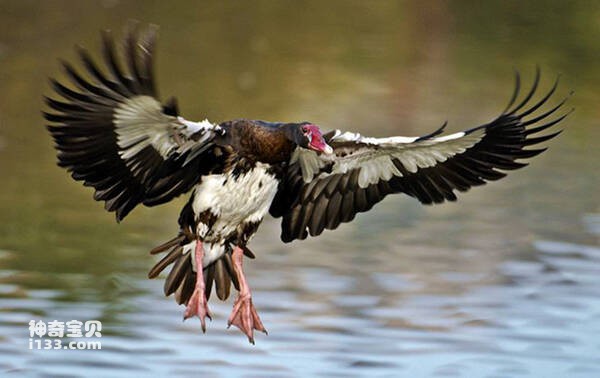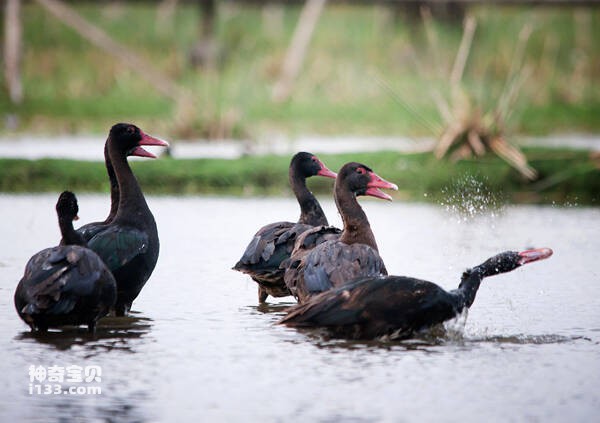Plectropterus gambensis
IUCN
LCBasic Information
Scientific classification
- name:Plectropterus gambensis
- Scientific Name:Plectropterus gambensis,Spur-winged Wood Goose
- Outline:Waterfowl
- Family:
Vital signs
- length:75-100CM
- Weight:4-5.9kg
- lifetime:No textual research information is available
Feature
It is a type of bird between geese and ducks, and is considered to be the largest living duck in other taxonomic systems
Distribution and Habitat
It is distributed in Angola, Benin, Botswana, Burkina Faso, Burundi, Cameroon, Central African Republic, Chad, Congo, Cote d 'Ivoire, Democratic Republic of Congo, Equatorial Guinea, Ethiopia, Gabon, Gambia, Ghana, Guinea, Guinea-Bissau, Kenya, Lesotho, Liberia, Malawi, Mali, Mauritania, Mozambique, Africa, Africa, Africa and Africa. Namibia, Niger, Nigeria, Rwanda, Senegal, Sierra Leone, South Africa, South Sudan, Sudan, Eswatini, United Republic of Tanzania, Togo, Uganda, Zambia, Zimbabwe.
Horned geese live in herds in lakes, ponds, rivers, deltas, and swampy meadows. Generally, big rivers and large lakes are preferred. In East Africa, although it can reach an altitude of 3,000 meters above sea level, it is avoided in salt lakes and mountains.
Appearance
Calteropterus is a type between geese and ducks, with a body length of 75 to 100 cm, male ducks weigh 5400-5900 grams, and female ducks weigh 4000-4500 grams. The black and white feathered flying goose is easy to identify, with a long, thick neck, broad wings and slender legs. The sexes are similar, but the males are larger.
The goose has a cap that is a bronze-gloss black metallic green from the neck down (except for the front neck), the sides of the chest, and almost the entire lower body (including the flight wings and tail). The larynx, lower neck, chest, lower sides and bottom are all white.
The forehead protrudes and the cheeks extend behind the eyes with pink bare skin. The hunchback of the female goose is less prominent, and the bare skin on the cheeks is relatively less. Legs and feet rose red, irises black.
Details
Plectropterus gambensis is a type of bird between geese and ducks, and is considered the largest living duck in other taxonomies.

The diet of tale-winged geese is mainly vegetarian, including plant seeds, fruits, tubers, aquatic plants and reeds, and also eats small fish and invertebrates.

The breeding period of long-winged geese varies with regions and rainy seasons. In northern Africa it is from August to December, in the east from January to June, and in the south from August to May. The nest is large and usually hidden in a thicket of riverbank vegetation. Old nests or tree holes, rock holes and termite mounds are also used. Fearful and cautious during breeding, females will fiercely defend their nest sites. Females lay 6 to 15 ivory-colored eggs per nest, which hatch for 30 to 33 days. After hatching, the parent geese continue to lead the education of the goslings until 10 weeks later.
Listed on the International Union for Conservation of Nature (IUCN) 2012 Red List of Threatened Species ver 3.1 - Low Risk (LC).
Protect wild animals and eliminate wild meat.
Maintaining ecological balance is everyone's responsibility!








